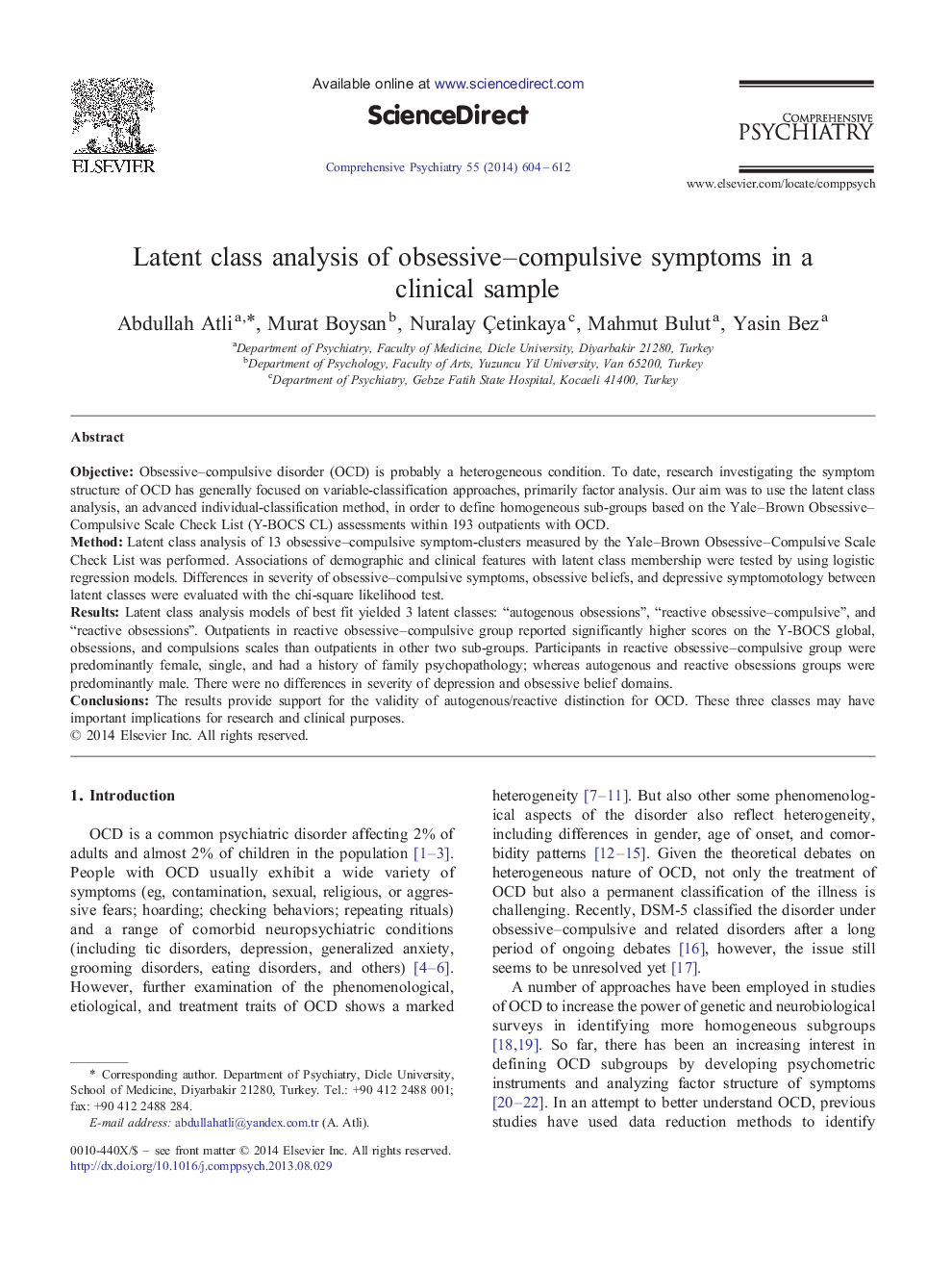| کد مقاله | کد نشریه | سال انتشار | مقاله انگلیسی | نسخه تمام متن |
|---|---|---|---|---|
| 316407 | 537725 | 2014 | 9 صفحه PDF | دانلود رایگان |
ObjectiveObsessive–compulsive disorder (OCD) is probably a heterogeneous condition. To date, research investigating the symptom structure of OCD has generally focused on variable-classification approaches, primarily factor analysis. Our aim was to use the latent class analysis, an advanced individual-classification method, in order to define homogeneous sub-groups based on the Yale–Brown Obsessive–Compulsive Scale Check List (Y-BOCS CL) assessments within 193 outpatients with OCD.MethodLatent class analysis of 13 obsessive–compulsive symptom-clusters measured by the Yale–Brown Obsessive–Compulsive Scale Check List was performed. Associations of demographic and clinical features with latent class membership were tested by using logistic regression models. Differences in severity of obsessive–compulsive symptoms, obsessive beliefs, and depressive symptomotology between latent classes were evaluated with the chi-square likelihood test.ResultsLatent class analysis models of best fit yielded 3 latent classes: “autogenous obsessions”, “reactive obsessive–compulsive”, and “reactive obsessions”. Outpatients in reactive obsessive–compulsive group reported significantly higher scores on the Y-BOCS global, obsessions, and compulsions scales than outpatients in other two sub-groups. Participants in reactive obsessive–compulsive group were predominantly female, single, and had a history of family psychopathology; whereas autogenous and reactive obsessions groups were predominantly male. There were no differences in severity of depression and obsessive belief domains.ConclusionsThe results provide support for the validity of autogenous/reactive distinction for OCD. These three classes may have important implications for research and clinical purposes.
Journal: Comprehensive Psychiatry - Volume 55, Issue 3, April 2014, Pages 604–612
